I have the opportunity to get boots on the ground in some of the Mountain West’s most interesting valleys, streams and tributaries. I’m not there if everything is going really well with those water bodies. I’m typically there to help clients assess how to “fix” obviously “broken” (under-potential/degraded), stream systems on a specific reach or watershed scale. With almost no exception our first field site stop is at the most heinous, pants down, degraded and non-functional stream reach. As a fluvial geek I look at each channel train wreck as a kind of puzzle. How did this channel get here? Why is this happening? What, if anything, can we do about it? And how many resources do you, my client, have to address any potential interventions here, at this most heinous of spots, or do we look elsewhere?
A Short Conversation on Stream States and the Anthropocene
What most people observe as “broken” system is actually a snapshot in a single point in time in a natural system always experiencing change and perturbation. All fluvial systems are in a constant cycle of evolution dictated by a host of environmental factors spanning shifts in climate change, geology and most importantly, to human impacts.
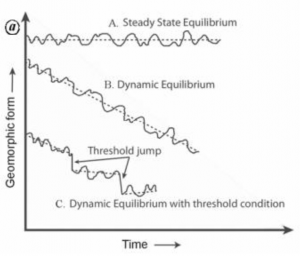
Fluvial geomorphologists consider “stream state” in context to equilibrium viewed through a continuum of geologic and human observation periods (Figure 1).
A system approaching steady-state equilibrium is typically described in the field as highly functional, stable, or in a state of balance between continuing landform processes (Figures 2 and 3). Regarding evaluation of restoration opportunities today and why a stream is “stable” or “broken”, one is challenged with framing existing conditions in context to the Anthropocene, the current geologic period during which human influence on the landscape and environment has been dominant.
The Anthropocene has not been particularly kind to our watersheds and riverine systems. Relative to pre-Anthropocene channel conditions almost everywhere we look channels are “broken” or rather adjusting to a new channel form following a human-induced threshold state change.
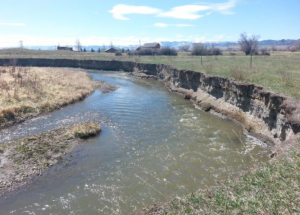
Examples of human-induced threshold state changes are abundant. For example, the almost complete extirpation of beaver in the Western US beginning in the early 1800’s had the unintended consequence of triggering wholesale channel state changes that are still working out across many of our mountain valley landscapes. These changes typically include conversion from multi-thread to single thread channels, channel downcutting and disconnection from historic flood plains and ongoing active channel enlargement (Figure 4).
Then one needs to consider compounding human induced events such as intense valley bottom placer mining following beaver extirpation, quickly followed by increasing numbers of homesteaders in these valley bottoms and the conversion of those from “messy” wetlands and angry streams to ones more suitable for forage and stock production.
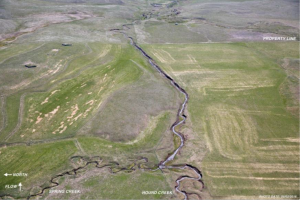
Then there is the mechanized period if human induced channel state changes that began in earnest immediately after WW II when cheap military surplus excavation equipment became ubiquitous on the landscape Figure 5). Suddenly even a modest irrigation company, farmer or rancher had access to game-changing tools to manipulate the fluvial landscape and system trajectory that included miles of flood control projects, levees, berms, channelization, re-routing etc., that translated as threshold state changes for streams, where they change from one form to another, (for example, from a multi-threaded meandering channel to a single thread incised channel). Threshold state changes are very messy.
What is “Sorta Broken” and Why is That an Attractive Stream State for Restoration?
With increasing frequency I am finding myself suggesting that instead of taking on the most systemically complicated, degraded and dynamic channel reaches, that project proponents instead re-orient their project focus up-stream to that transition point between “fair” and “seriously degraded” channel conditions – the “sorta broken” restoration sweet spot.
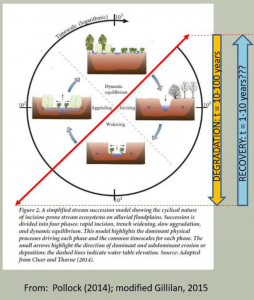
In the context of a stream system, the reaches that are “sorta broken” are ones in the early stages of a threshold state change that sends a channel off to periods of re-shaping itself to the new condition. Re-visiting the beaver extirpation threshold state change, the extirpation of beaver, while a blink in geologic time, created a large landscape threshold state change that is depicted in Figure 6. In this simplified figure, note the time scales related to the evolution of channel form. The “sorta-broken channel” exists in the early stages of channel incision while the “really broken” channels are located in the “widening period”.
Figure 6. A simplified model of channel evolution from a beaver mediated equilibrium state to a cycle of change.
In the field we recognize these channels – characterized by vertical eroding silt banklines, actively changing channel boundaries and either partially or fully detached from their historic (pre-threshold event) floodplains. Often there is an upstream gradient where either channels have readjusted to their new base level elevation and formed new inset floodplain surfaces or still have intact habitat, (not yet affected by downstream channel change). The “sorta broken” stream reaches are in this transition space (Figure 7).
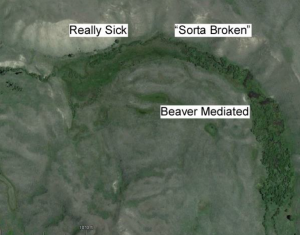
So why am I so fond of “sorta broken” channel reaches for restoration projects? One can look at degrading streams as a sick community of reaches. As the treatment practitioner, one can then approach a systemic (community) restoration with the concept of medical triage by asking: “With the limited resources we have, combined with our ecological objectives and guiding image, which reach is too sick to treat and who is sick but can be returned to full or better health?” For example, do we spend $100,000 to treat 800 feet of a very sick patient or do we spend the same on bringing 8,000 feet upstream back to health?
Figure 7. Gradient of channel stability states in a single valley reach.
I’ve worked on 7 projects in the last 2 years where this conversation occurred. Again, clients frequently want to tackle the most degraded and most costly reaches first rather than perhaps the less glamourous but more important work of “saving” less impaired but at risk or sick reaches upstream. Besides the concept of “bringing channel health downstream”, frequently the “sorta-broken” reaches are the easiest to restore because:
• Far less mechanical and vegetative intervention is necessary to achieve project objectives which correlates with project cost;
• The stream environment is less prone to sudden large channel changes initiated by infrequent but large flood events;
• An opportunity is presented to “dry run” and monitor restoration strategies on smaller scales than necessary in more degraded reaches;
• Fixing upstream or “sorta broken” reaches helps reduce stressors on the more degraded downstream reaches. (For example, by reconnecting a channel to its floodplain upstream less channel energy is focused on the degraded reach downstream);
• Working up-stream to downstream “pulls” higher quality habitat down the watershed in the direction of the flow of surface and ground water, sediment, nutrients and biota.
Wrapping This All Up
In my experience most project proponents focus first on the most unstable, degraded and under-potential channel reaches when assessing project opportunities instead of assessing the reach in context to its position in an ever-changing state of equilibrium or disequilibrium. When channels are dynamically unstable it is often related to a precedent system threshold state change where one is highly constrained with respect to any “fixes” without first addressing upstream instability. Further, highly unstable channel reaches frequently present potential risk of project failure in the short- or near-term.
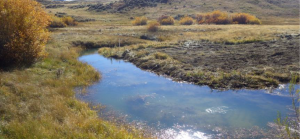
Understanding stream degradation in the context of both spatial and time continuums is important for identifying project feasibility. Too frequently well intend project proponents are focused on treating symptoms versus the causes. These causes are related to a frequently complicated interaction of relatively recent human-induced channel state changes and a point in time when a channel is in a natural channel adjustment to the new environmental conditions. If one can approach project feasibility from a “triage” perspective one will gravitate to restoring “sorta-broken” reaches (Figure 8) first before tackling the “code blue” patients. By doing so, one is also working systemically with a single basin or watershed’s health rather than point problems.






